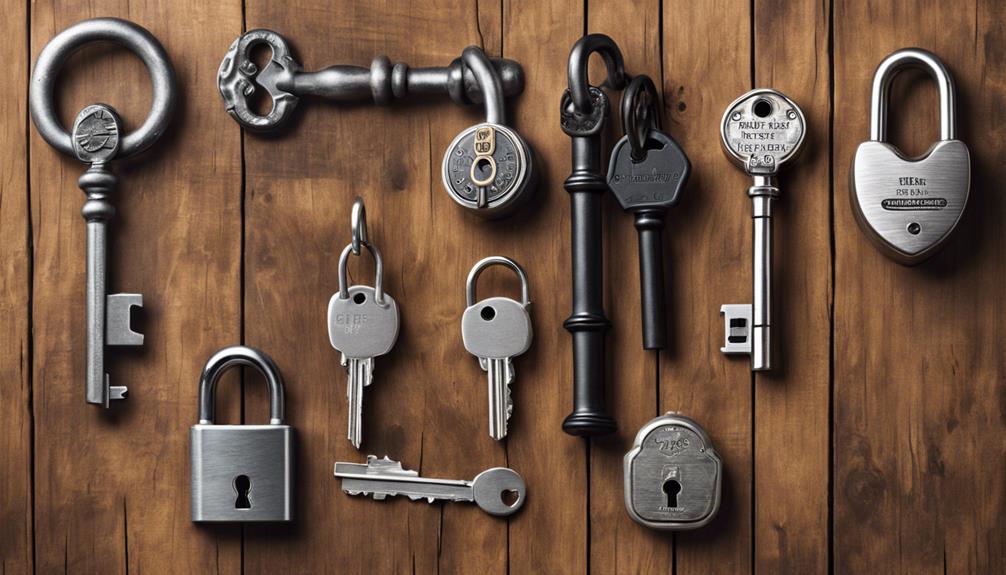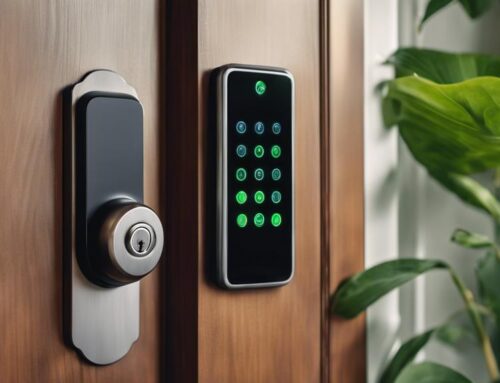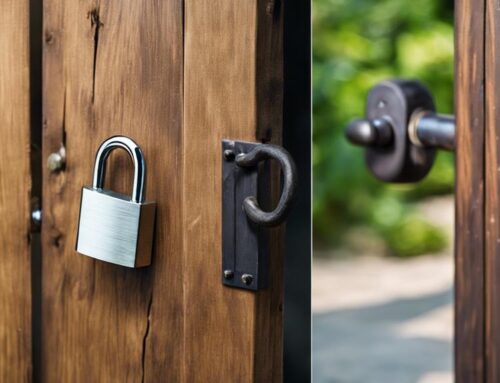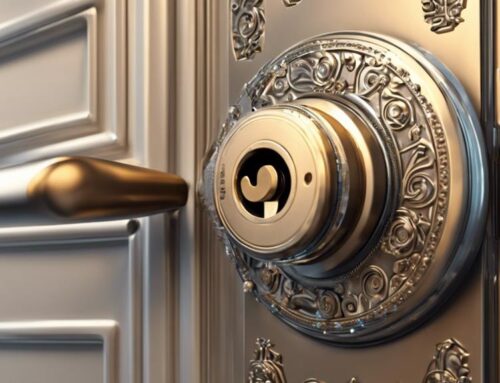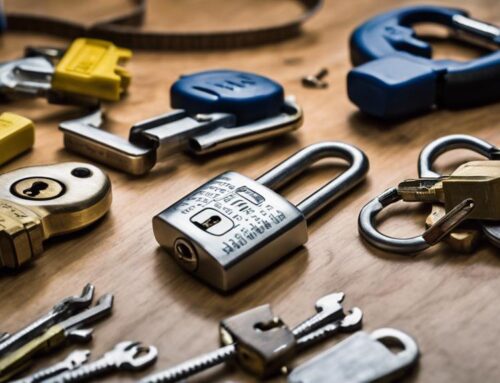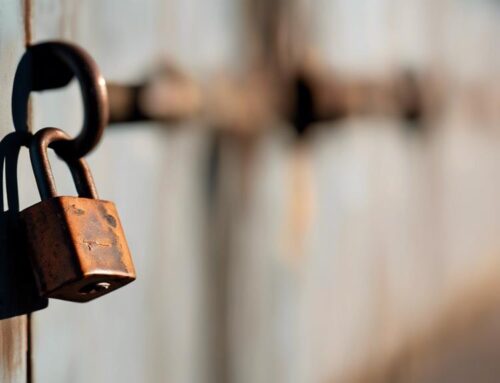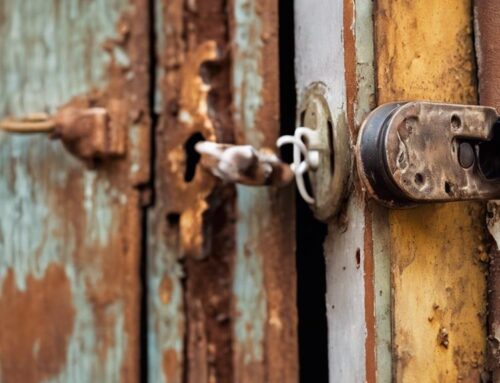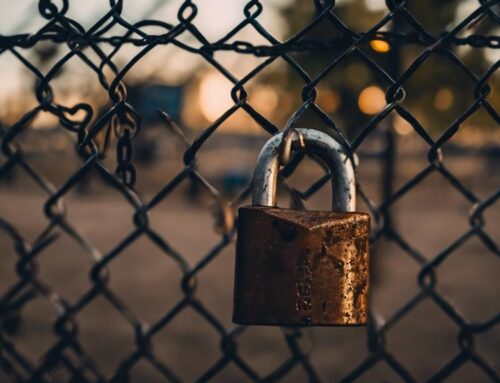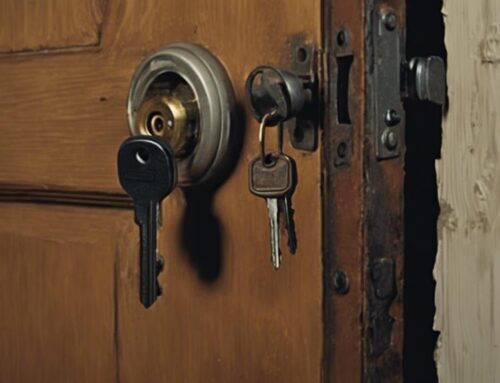Lock re-keying has come a long way from its vintage origins. Early locks, made of wood and metal, had simple designs that required manual adjustments. Then, pin tumbler locks entered the scene, allowing you to change internal pins easily, saving time and money. As security needs evolved, key control systems emerged, ensuring accountability in shared spaces. The birth of electronic locks introduced keyless entry, while smart locks now offer remote management and temporary access features. Each advancement focuses on enhancing security and convenience for you. So, if you want to discover more about this progression, just stick around.
Key Takeaways
- Early locks used simple wooden and metal designs that introduced the concept of rekeying, allowing specific keys to operate them.
- Pin tumbler locks improved security with internal pins aligning only with correct keys, making rekeying easier and cost-effective.
- Key control systems emerged to manage access in shared environments, preventing unauthorized duplication and tracking key usage for accountability.
- Electronic locks introduced keyless entry and remote access, enhancing convenience and security while allowing for digital rekeying and access logs.
- Smart locks further evolved rekeying by integrating with smart home systems, enabling flexible access management and increased security through advanced technologies.
Early Lock Mechanisms
Have you ever wondered how early lock mechanisms laid the foundation for modern security? Understanding the history of lock rekeying reveals a fascinating journey that highlights the significance of safeguarding what we value. Early locks, crafted from wood and metal, were simple yet effective. They employed basic mechanisms that allowed only specific keys to open them, and the concept of lock re-keying emerged as a practical solution for adapting to lost keys or changing ownership.
This simplicity paved the way for the evolution of lock rekeying, an essential aspect of security that adapts to changing needs.
As you explore modern vs vintage lock rekeying, you'll appreciate how innovations have transformed the process. While vintage locks required manual adjustments, today's systems often involve quick, efficient methods that enhance security without compromising convenience.
This evolution allows you to serve others by ensuring that their spaces remain secure and accessible.
In essence, early lock mechanisms not only shaped our understanding of security but also set the stage for more advanced rekeying techniques. By embracing this history, you can better appreciate the tools and methods available today, empowering you to make informed decisions about safeguarding your property and the people you care for.
The Rise of Pin Tumbler Locks
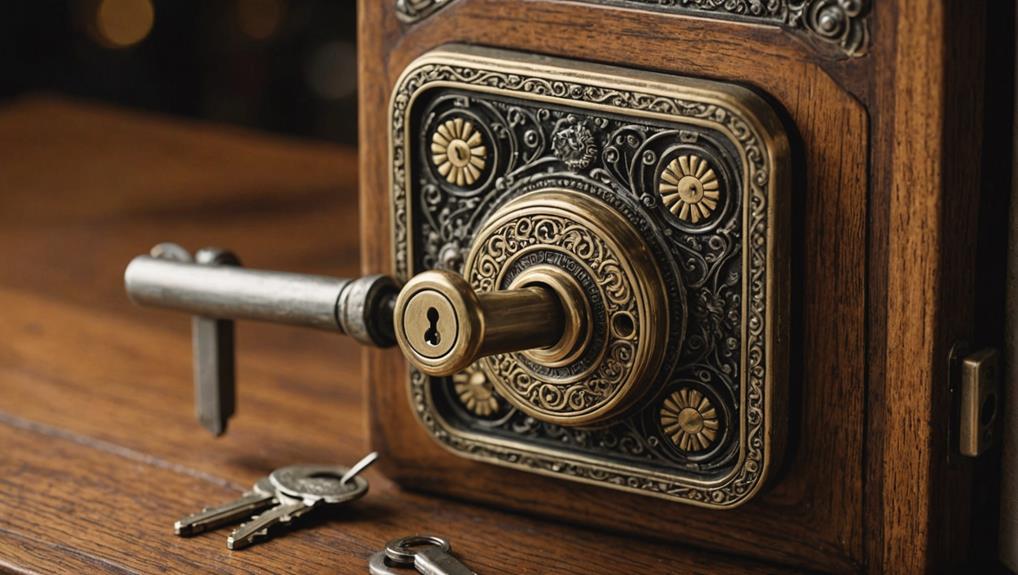
The rise of pin tumbler locks revolutionized security, making it easier and more efficient to safeguard our possessions. The internal mechanics of these locks involve a series of pins and tumblers, which are essential for their functionality and security.
You'll appreciate how this simple yet effective mechanism allowed for customizable security solutions that truly meet your needs. The design features a series of pins that align only when the correct key is inserted, preventing unauthorized access, and ensuring the lock operates smoothly when rekeyed, as described in the re-keying process.
As rekeying technology changes emerged, pin tumbler locks became the go-to choice for homeowners and businesses alike. You could easily rekey these locks without replacing the entire unit, saving time and money while enhancing security.
This adaptability shifted seamlessly from vintage to smart lock rekeying, paving the way for advanced security options in today's world.
Pin tumbler locks not only offered convenience but also empowered you to manage your security with confidence. Whether you're looking to upgrade your home's defenses or simply need to rekey a lock, understanding this technology helps you serve others better by providing reliable security solutions.
As you explore the evolution of rekeying, you'll find that pin tumbler locks laid the groundwork for the sophisticated systems we enjoy today.
Classic Rekeying Techniques
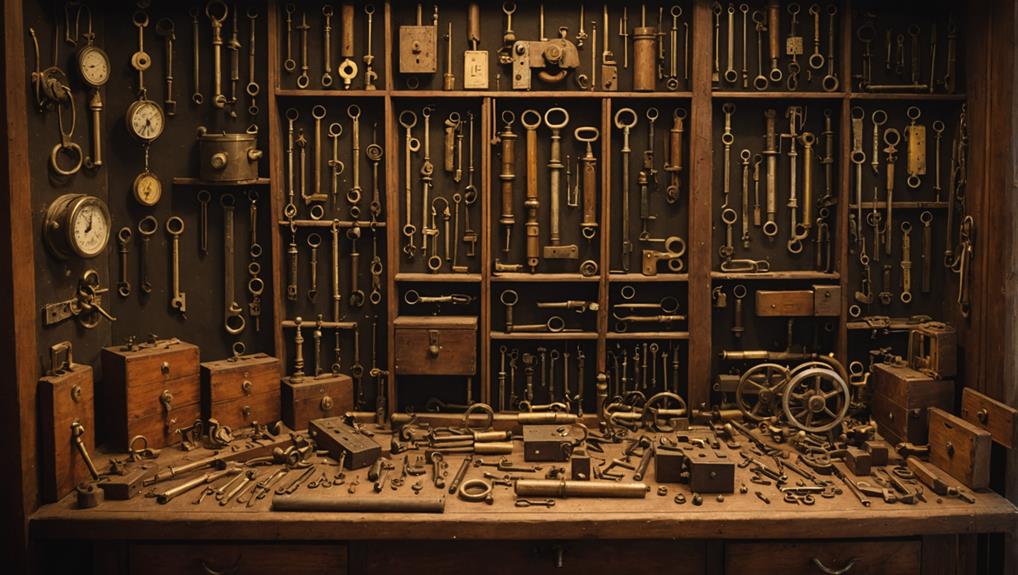
Classic Rekeying Techniques
How can classic rekeying techniques provide you with both security and convenience? By mastering these methods, you can guarantee your home or business remains safe while giving yourself the flexibility you need.
Rekeying involves altering the internal pins of your lock, allowing a new key to operate it, while the old key becomes useless. This means you can change your locks without the hassle and expense of replacing them entirely. Utilizing essential tools for lock rekeying can streamline the process and make it more efficient.
One of the most common classic techniques is using a rekeying kit. These kits typically contain a variety of pins and tools designed to help you adjust the lock mechanism. With a bit of practice, you can rekey your locks in no time, empowering you to manage access for those you trust.
This method not only enhances security but also saves you money.
Another advantage of classic rekeying is that it allows you to maintain control over who's access to your property. If you've recently moved or had a change in personnel, rekeying offers peace of mind.
The Advent of Key Control
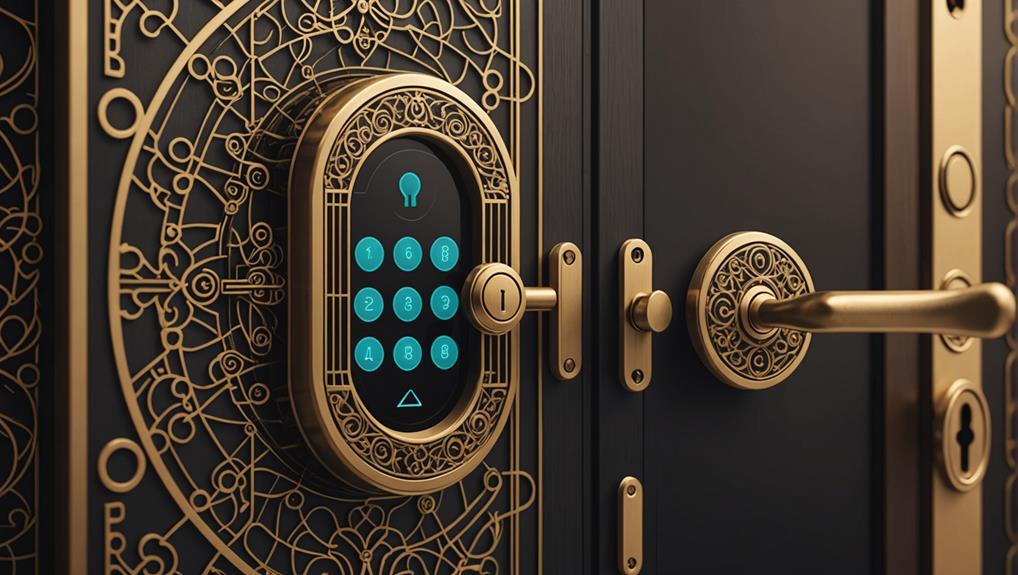
The Advent of Key Control
In recent years, many homeowners and businesses have turned to key control systems to enhance their security measures. These systems give you a powerful way to manage who's access to your property, especially in environments with shared access, such as multi-unit residential and commercial buildings. With key control, you can guarantee that only authorized individuals have keys, reducing the risk of unauthorized entry.
Enhancing security in shared spaces is an essential consideration for property owners.
Key control systems often involve the use of restricted keys and locks that can't be easily duplicated. This means you can confidently provide keys to employees or service providers without worrying about them making copies.
Additionally, many systems allow you to track and log key usage, providing you with a detailed record of who accessed what and when.
Implementing a key control system not only elevates your security but also helps you maintain a sense of accountability among those who've access. You'll find that when people know their key usage is monitored, they tend to be more responsible.
The Birth of Electronic Locks
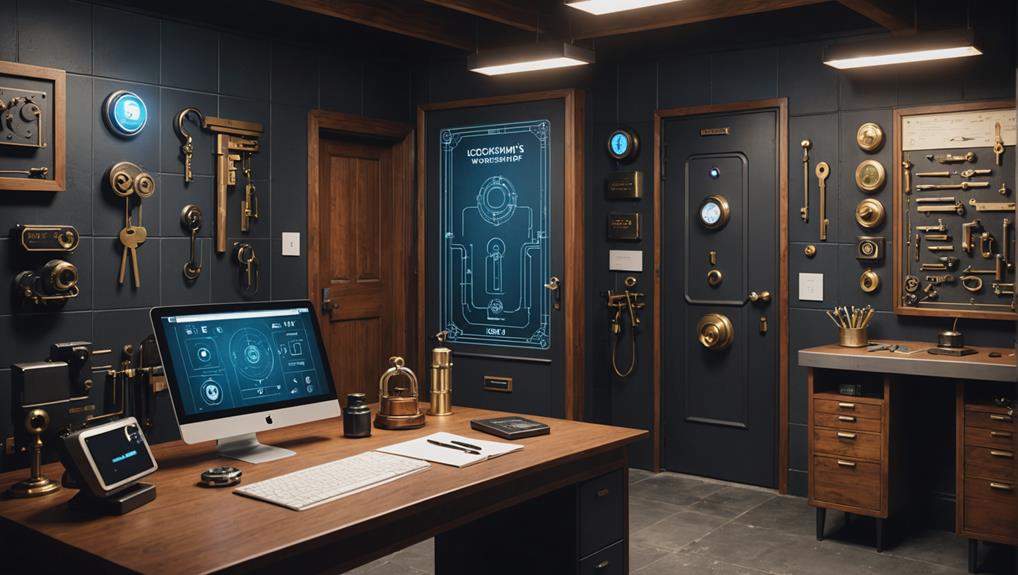
Electronic locks revolutionized access control by combining convenience and security in an age where traditional keys often fell short.
These innovative devices not only simplified the locking process but also enhanced safety measures. As you explore the benefits of electronic locks, consider the following key features:
- Keyless Entry: Forgetting or losing keys is a thing of the past. With electronic locks, you can use codes, fobs, or even biometric data for access.
- Remote Access: You can grant or revoke access to others from anywhere, making it easier to manage visitors or service personnel.
- Audit Trails: Many electronic locks provide a record of who accessed the property and when, helping you maintain control and security.
- Customizable Settings: You can set temporary codes for guests, ensuring that your home remains secure without constant key management.
Introduction of Smart Locks
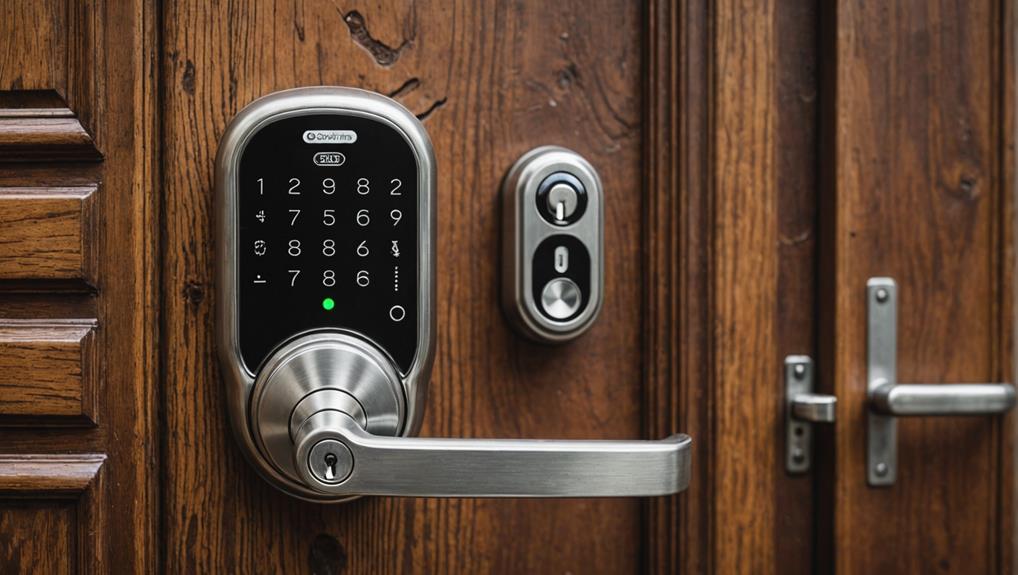
As technology advanced, smart locks emerged as a natural progression in the evolution of access control. These locks not only enhance security but also offer convenience and flexibility that traditional locks can't match. Imagine being able to grant access to your home without being there, or easily changing codes for different users. Smart locks cater to the needs of homeowners, property managers, and service providers alike.
Here's a quick comparison of smart locks vs. traditional locks:
| Feature | Smart Locks | Traditional Locks |
|---|---|---|
| Access Method | Keypad, App, Biometric | Physical Key |
| Remote Management | Yes | No |
| Temporary Access | Yes | Limited |
| Integration | Smart Home Systems | Standalone |
As you consider smart locks, think about how they can serve not just your needs but also those of your guests and service providers. They provide a seamless experience for everyone involved. By embracing smart technology, you create a secure, efficient, and welcoming environment for all.
Future of Lock Re-keying
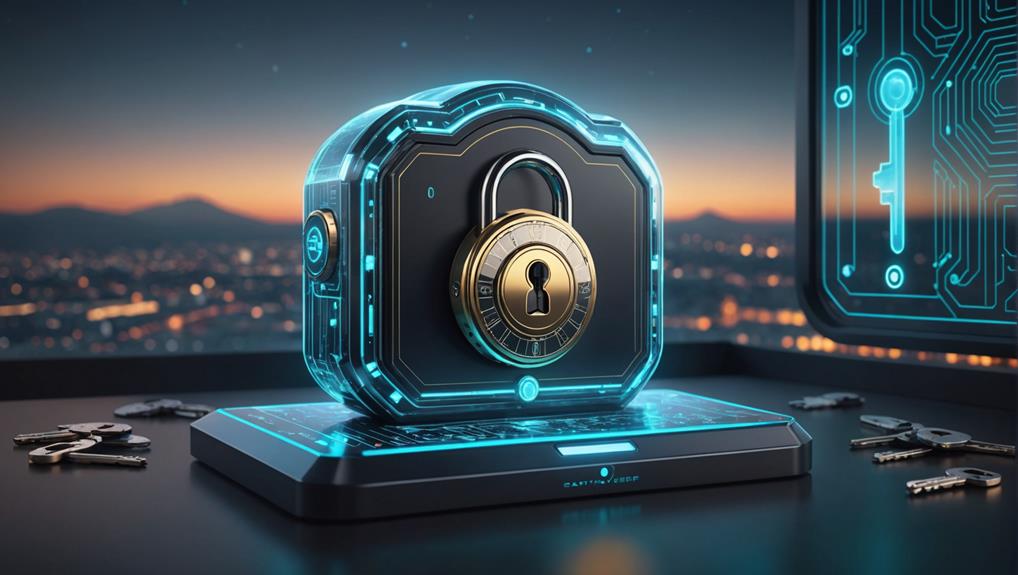
The future of lock re-keying is poised to be revolutionized by advancements in technology and user-centric design. As you explore these innovations, you'll see how they can serve you and those around you better than ever before.
With the rise of smart locks, users can enjoy enhanced security features and convenience that traditional locks simply can't offer. Here's what you can expect:
- Smart Key Systems: These systems allow you to re-key locks digitally, giving you the power to adjust access without the hassle of traditional methods.
- Mobile Apps: Imagine controlling your locks from your smartphone. Mobile applications will enable you to change codes and grant access to others instantly.
- Biometric Access: Fingerprint or facial recognition technology will add another layer of security, ensuring only authorized individuals can enter.
- Remote Management: You'll be able to manage multiple properties seamlessly, making it easier to serve clients, tenants, or family members with changing access needs.
These advancements not only provide convenience but also prioritize security and flexibility.
Embracing the future of lock re-keying means you can serve others more effectively, ensuring their safety and peace of mind in an ever-evolving world.
Frequently Asked Questions
What Tools Are Needed for DIY Re-Keying?
For DIY re-keying, you'll need a few essential tools.
Start with a re-keying kit specific to your lock type; it usually contains different pins and a follower.
You'll also want a screwdriver to remove the lock from the door.
Don't forget a pair of pliers for handling small parts and a flashlight for a better view of the inner workings.
With these tools, you're set to help others enhance their security easily!
How Often Should I Re-Key My Locks?
You should consider re-keying your locks whenever you move into a new home, lose a key, or have a security concern.
It's also a good idea to re-key them every few years as a proactive measure.
By doing this, you guarantee that only trusted individuals have access to your space.
Regularly checking your locks and their effectiveness keeps your home secure and gives you peace of mind.
Keeping others safe matters!
Can I Re-Key a Smart Lock Myself?
Did you know that nearly 70% of smart lock users prefer DIY solutions for home security?
Yes, you can re-key a smart lock yourself, but it depends on the model. Many smart locks come with user-friendly instructions, making the process straightforward.
Just guarantee you have the right tools and follow the manufacturer's guidelines. If you're ever in doubt, don't hesitate to reach out to customer support for assistance.
You're enhancing your home's security!
Are There Any Security Risks With Re-Keying?
Yes, there are security risks when re-keying a lock, especially if you're not familiar with the process.
If you don't follow the proper steps, you might inadvertently leave vulnerabilities that could be exploited.
Additionally, using low-quality keys or tools can compromise the lock's integrity.
It's essential to guarantee you're using the right techniques and equipment, or consider hiring a professional to maintain your home's security and peace of mind.
How Much Does Professional Re-Keying Typically Cost?
When you're looking into professional re-keying, you'll typically find costs ranging from $15 to $50 per lock.
Factors like the locksmith's expertise, your location, and the complexity of the lock can influence the price.
If you've got multiple locks, ask about bulk discounts.
It's a small price to pay for enhanced security, ensuring that only you and those you trust have access to your space.
Investing in safety is always worth it!
Conclusion
As you've journeyed through the evolution of lock re-keying, it's clear that we've gone from tumblers to tech. Who needs a locksmith when you've got an app, right? Just think, while your grandparents are still fumbling with their keyrings, you're outsmarting your own door! But let's be real—nothing beats the thrill of locking yourself out while your smart lock decides it's on a coffee break. The future's bright, but maybe keep a spare key handy, just in case!

